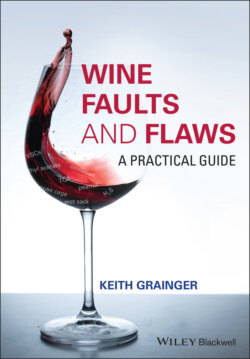Читать книгу Wine Faults and Flaws - Keith Grainger - Страница 89
2.9.2 Level of Readiness for Drinking/Potential for Ageing
ОглавлениеAll wines have a window of drinkability, beyond which they will be in a state of decline, either slow or rapid, the latter particularly in the case of low quality wines. Within the window of drinkability, there will, in the case of high‐quality wines, be a period when a wine is at its peak, in perfect balance and expressing complex tones that almost defy description. The tertiary characteristics will be fully developed, and the length of finish will be at a maximum. Unfortunately, there can be a disparity in the peak of drinkability between individual bottles of the same wine, sometimes due to the efficiency of the closure, but also if the storage temperature and other conditions have been inconsistent. As wines decline, the fruit will start to dry out. Richness will fade, oxidative and vegetal characteristics may overwhelm, bitterness comes to the fore, and the length of finish diminish. A decrepit wine may show high levels of oxidation and other faults. There are numerous factors the taster might consider in reaching an assessment as to where a wine is in its life‐cycle including development on the nose and palate, structure, balance, concentration, complexity, and length.
